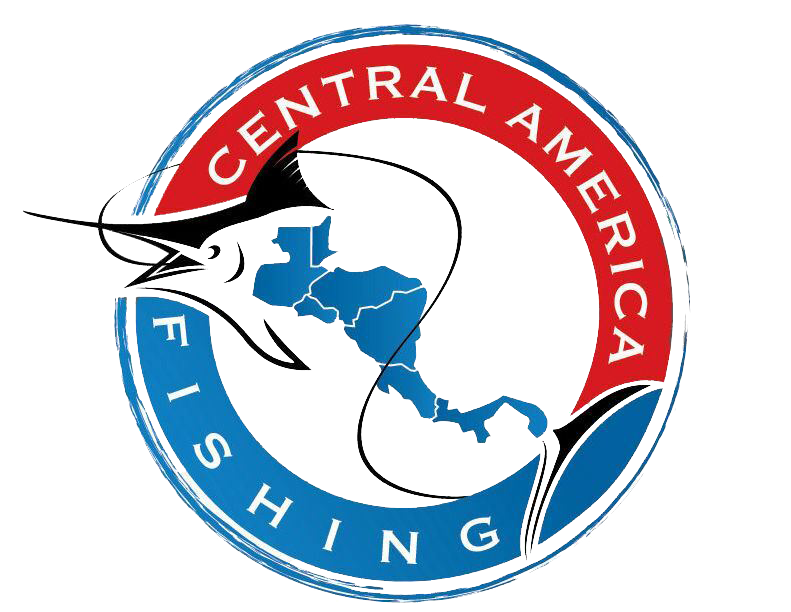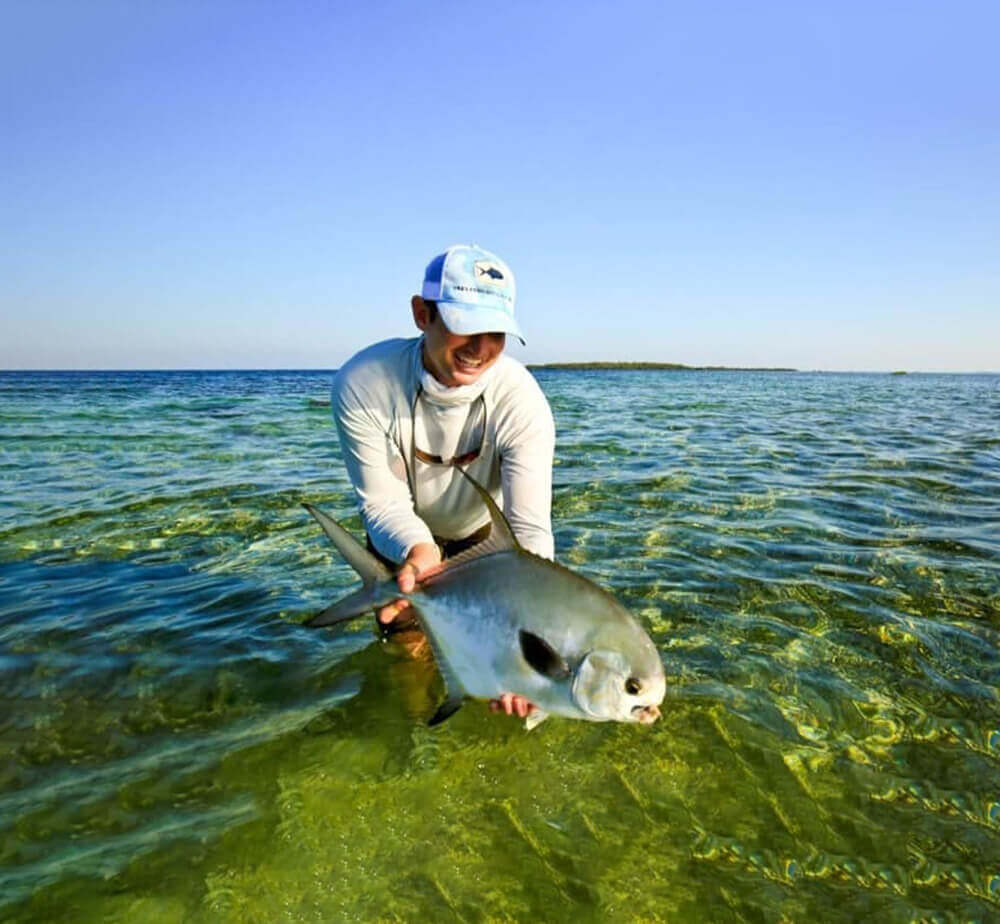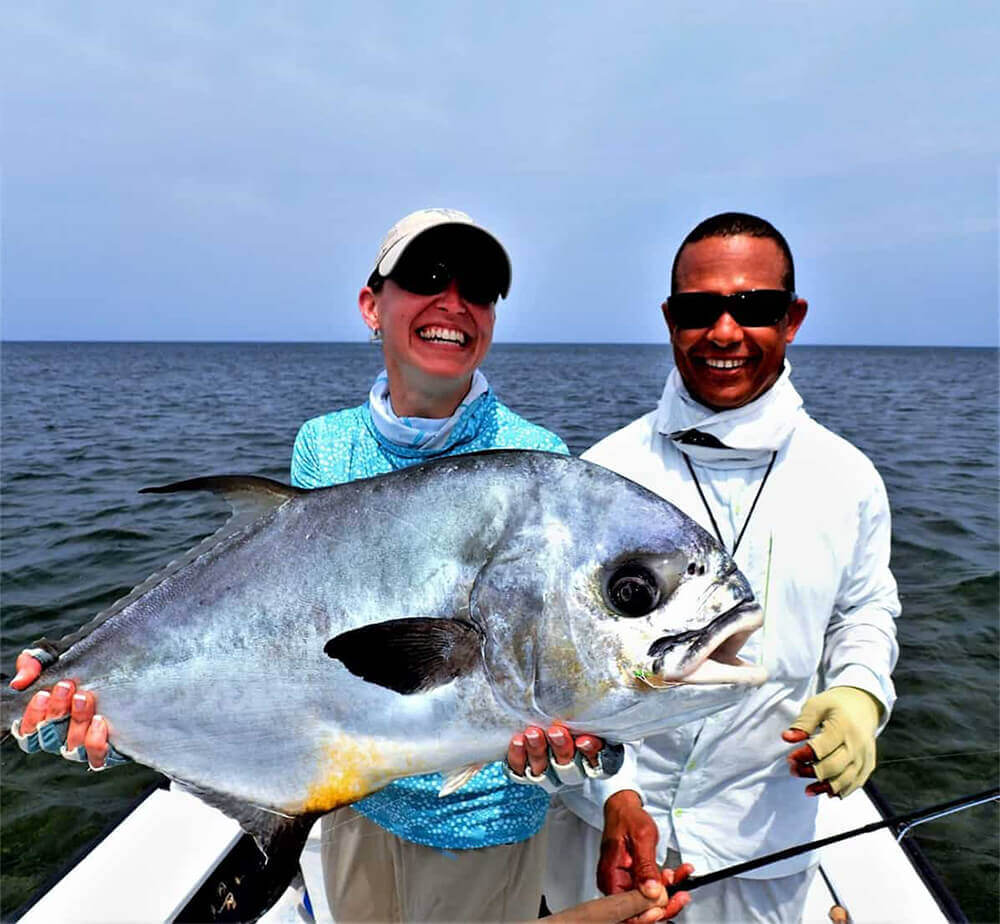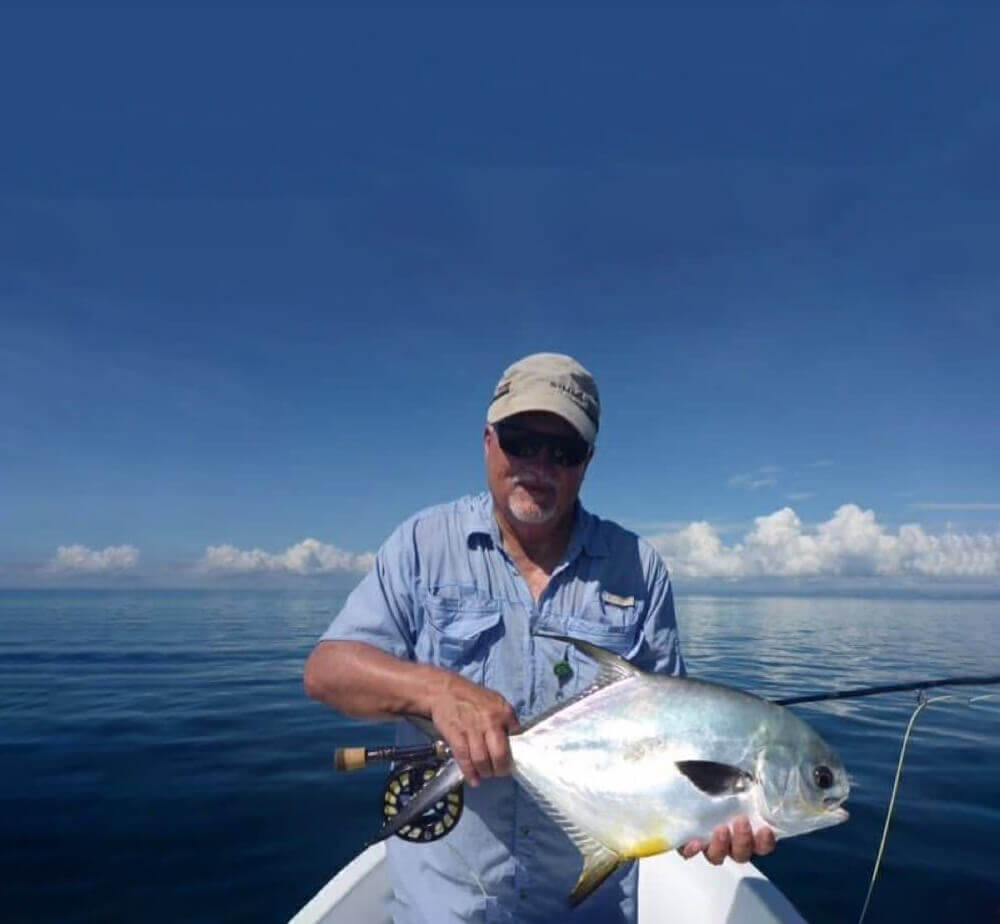Permit Fish
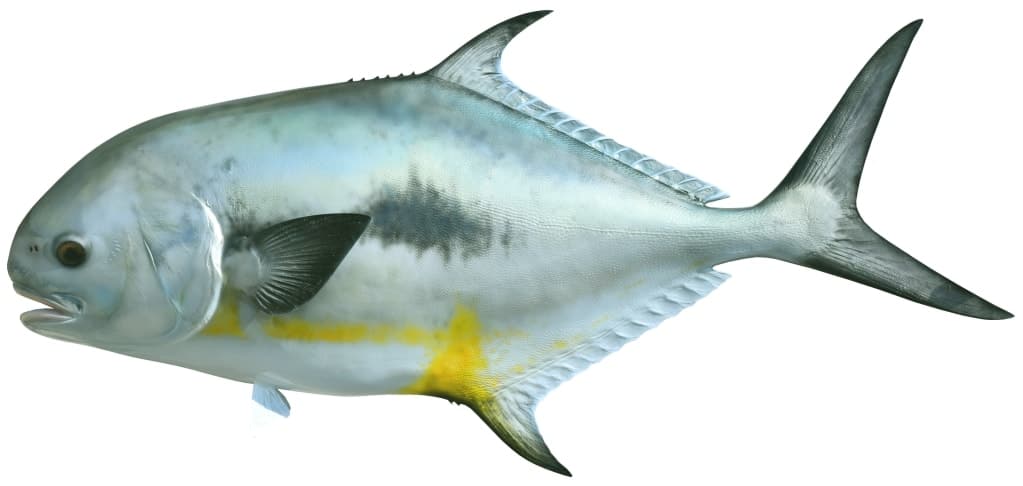
Permit are a shallow water schooling fish found in flats as shallow as one foot deep to reefs and wrecks 100 ft deep. They are found in the western Atlantic Ocean from as far north as Massachusetts to as far south as Brazil. They are most commonly found off the waters of Florida and the Caribbean Islands south to the reefs and flats in Belize. Permit have compressed bodies that make them appear tall and skinny with deep chests. They are silver in color and have brown or grayish colored fins. Most permit display a yellow-orange spot by their anal fin. Permit fish have deeply forked tails, which is often how you spot them when they are feeding on the flats. The all tackle world record is 60 lbs 0 oz caught in Brazil in 2002.
What They Eat?
Similar to bonefish, permit feed on crabs, shrimp, sea urchins, shellfish and rarely smaller fish. They will root the sandy bottom looking for crustaceans or cruise the shallow flats looking for crabs. Guides and anglers should look for ‘tailing’ fish, permit with their tails sticking out of the water as their heads are down feeding. This is one of the tell-tale signs that they are busy eating and it’s time to get a fly in front of them.
Where To Find Them?
Permit are found in warm, shallow water throughout the western Atlantic but are most populous from Florida to Central America. Belize is home to some of the best permit fishing in the world thanks to miles and miles of shallow saltwater flats. They are often spotted tailing on sandy bottoms, grassy bottoms or the flats in water less than two feet deep. They can also be found in schools in deeper water around structure like reefs and wrecks.
